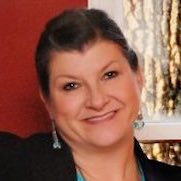4 minutes
Sunova CU’s business model emphasizes long-term mutually beneficial relationships and exceptional service.
This article is part of CUES’ celebration of International Credit Union Day next Thursday, Oct. 19.
$1.6 billion Sunova Credit Union, Selkirk, Manitoba, boasts one of the youngest, most energized (and top performing) credit union teams in North America. Year after year, they’re leaders in sales generation and member satisfaction. Turnover is low (9.43 percent in 2016), and the CU’s work environment conducive to growth and collaboration.
Unlike models built around the C-suite, success stems from a business model that recognizes and rewards front-line staff first and eliminates unintended barriers (perceived or otherwise) between the corporate office and branches.
“You can choose to compete in price, product or service delivery, but not all three,” reflects CEO Edward Bergen, CCD, CCE, a CUES member. “Being the lowest in price is difficult, and since associates are often the first point of contact with members, we wouldn’t want them to be the lowest paid. We recognize their value and have built a business model focused on fostering long-term, mutually beneficial relationships and delivering exceptional service.”
Here are some best practices from Sunova CU’s experience.
1. Remember that collaboration is key.
The first step is to acquire the right talent—friendly, caring, confident and outgoing individuals who can deliver the right style of service. Those who focus less on traditional sales but more on helping members achieve their financial goals.
For example, everyone knows that good member service starts with greeting everyone who walks through the door, explains Bergen. But not every person (or personality) is equipped to follow through. To get the right person requires screening—not necessarily for banking experience but for personality traits that inspire trust, confidence and exceptional service.
“We also look for people who want flexibility, the opportunity to influence their career direction and be compensated commensurate with their success,” says Bergen.
It may be no surprise that at Sunova CU, employees trend younger. Millennials represent 50 percent of all staff and 33 percent of senior management. Along with clear expectations, employees have an enormous amount of freedom to do their jobs, including how they reach their goals. This approach has broad appeal, including among younger employees.
2. Offer a proper reward system.
Based on performance, employees can earn excellent pay—up to 30 percent in incentives on top of above-market salaries. In 2016:
- The average employee earned 23 percent above his or her base pay;
- The average bonus paid within the organization was $6,500;
- The average merit increase (base salary raise) and bonus percentage was 16.9 percent;
- The highest bonus paid to staff (non-management) was $21,000; and,
- 45 percent of front-line staff exceeded their sales goals (new deposit dollars and net new loan dollars).
“Build a system that matches your expectations and serves your members,” stresses Bergen. “Data and market research can tell you what your members need, whether it’s consolidating debt, a mortgage to buy a home or an investment strategy. Rather than compensating the order-takers, reward employees based on the opportunities they create. This will enhance the trust between you and your membership, lead to business referrals and perpetuate growth.”
3. Keep staff up-to-date on their progress.
Bergen suggests making public your daily sales results. “At Sunova, everyone can see how they’re performing every day, and how they compare to the group. This reiterates expectations and aptly rewards top performers who are bent on receiving the best return. With the right individuals in place, others will seek to emulate the performers and improve. Tracking daily results will also enable you to step in quickly and assist those who aren’t finding as much success.”
4. Remove other barriers.
“Start by eliminating the minutiae, repetitive actions front-line employees are often required to do,” advises Bergen. “Remove the physical barriers, too, like counters. Today, we feature pods in most branches. Staff and members stand side-by-side, view the same monitor and, when privacy is needed, the conversation moves into one of our small meeting rooms. Rooms are equipped with a comfortable seating area and a large flat screen monitor displaying the member’s data. Needs are discussed; problems resolved; financial plans set in motion.”
At the corporate campus, Sunova CU has no typical corner offices: Everyone has the same size desk, configured in a single open area. “We don’t place more prominence on the executives than anyone else,” says Bergen. “In fact, if anyone takes precedence, it’s our associates on the front line.”
5. Make a point of communicating with your staff—all of the time.
“Ask what you can do to help them succeed,” concludes Bergen. “They’re your greatest asset, and when you hire the right personalities and reward top performers, member satisfaction soars and your business will grow.”
Stephanie Schwenn Sebring established and managed the marketing departments for three CUs before launching her business. As owner of Fab Prose & Professional Writing, she assists CUs, industry suppliers and any company wanting great content and a clear brand voice. Follow her on Twitter @fabprose.









